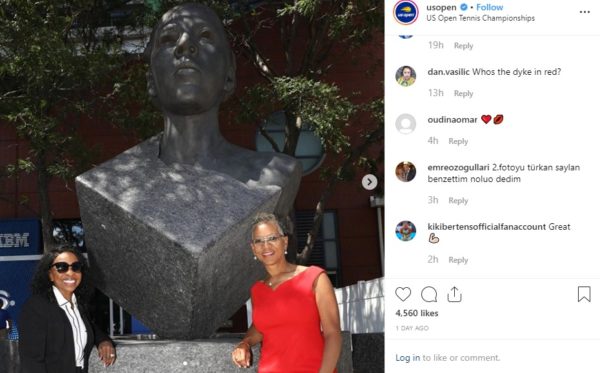Althea Gibson, the woman who broke professional tennis’ color barrier in 1950, was finally honored on the first day of the U.S. Open with a sculpture on Monday. The bust stands outside of Arthur Ashe Stadium in Flushing, New York, where a ceremony took place.
Gibson was the first Black person to play in the U.S. National Championships, which preceded the U.S. Open. And she was the first Black player, male or female, to win a grand slam tournament at the French Open in 1956. She also won Wimbledon twice, in 1957 and 1958, as well as the U.S Open in both of those years.
Before the Harlem native retired in 1958, she racked up 11 Grand Slam titles, five of them singles titles, and inspired a countless number of black female and male tennis players. The retired tennis pro Katrina Adams is one of those people, and she spoke about Gibson’s impact during an interview. Adams is also the first black president of the United States Tennis Association.
“This is not just a player who won a ton of titles, this is someone who transcended our sport and opened a pathway for people of color,” Adams told The New York Times.
“If there was no Althea, there’d be no me,” she added. “Because tennis would not have been so open to me. Everything she had to do was three times harder than it was for the normal person.”
The bust sculpture, designed by Eric Goulder, reportedly weighs over 18 tons and is made of bronze. And many said its arrival is a longtime coming.
“It’s about time,” said Gibson’s former doubles partner Angela Buxton in an interview with The Undefeated. “Althea, with her two ticker-tape parades, still wasn’t allowed into a hotel where the whites sleep or a water fountain to drink where whites drink. But she helped to break that down.”
Gibson passed away in 2003 at the age of 76 in East Orange, New Jersey, from respiratory failure.

@usopen Instagram


